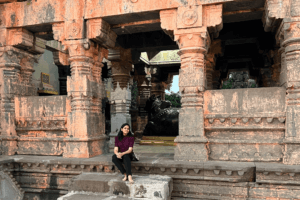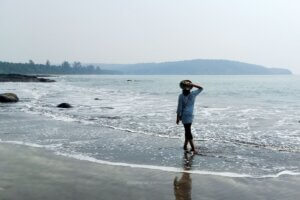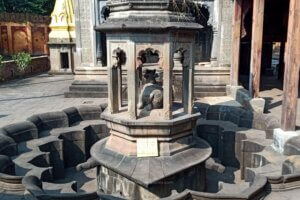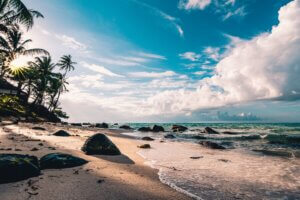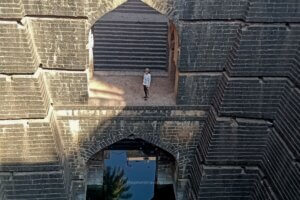Elephanta caves are some mystical caves located on the Gharapuri island near Mumbai. These caves are declared as a UNESCO World Heritage site. It is a beautiful place for a quick getaway from Mumbai. In this post know how to reach there and what to see.
Quick details about the Elephanta caves
- Best time to visit: Any time of the year, but make sure it’s not a heavy rainy day.
- Timings: 9.30 am to 5.30 am. The Elephanta caves are open on all days except Mondays.
- Accessibility: Accessible to wheelchairs and elderly people by the use of Palanquins or Doli.
- Food, snacks and Washrooms: Available near the caves.
How to reach Elephanta caves
The best way to reach the Elephanta caves is via Mumbai city. When you reach Mumbai take a train to the Churchgate railway station. Then you should head to the gateway of India. It is a 20-30 minute walk from the railway station. You can walk along the scenic and famous marine drive. If you don’t want to walk then take a bus or a taxi cab. I just enjoyed my walk along the marine drive road.
Gateway of India
After reaching the Gateway of India, you will first admire the Taj hotels both old and new. Opposite to them is the vast expanse of the Arabian sea. You can spend some time admiring at the arch of Gateway of India and then walk towards the jetty nearby. The boats that ferry people to the Elephanta caves are parked here.
Elephanta caves private boats or ferry
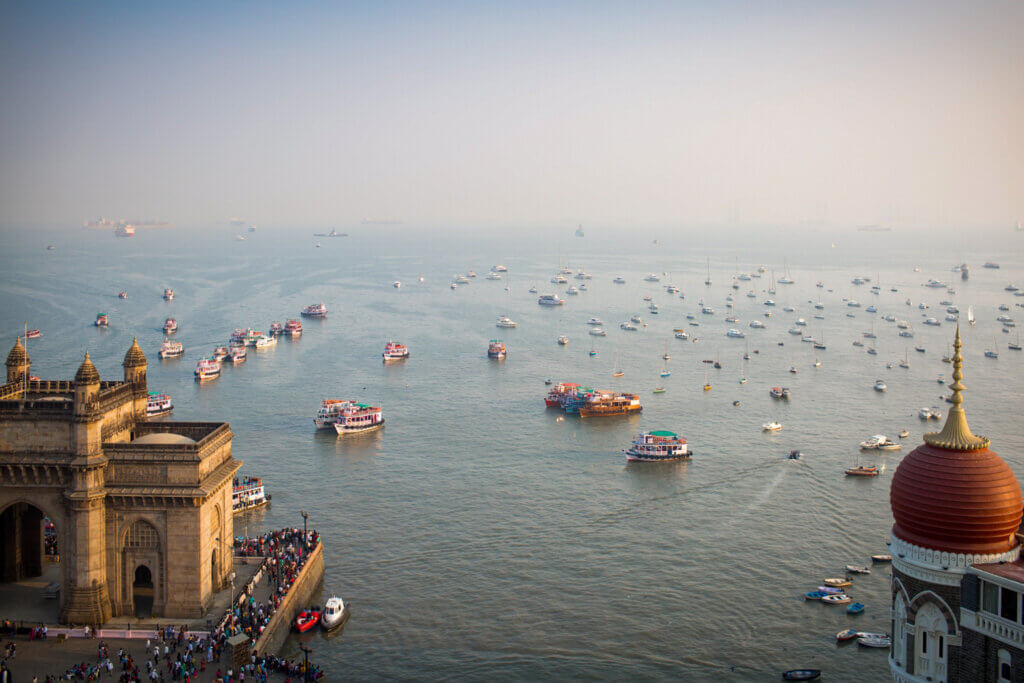
The ferries at the Gateway of India rune every half an hour. They operate from 9 am to 2 pm. You can buy the ferry tickets on the spot before boarding the boat. The ferry ride through these waters is quite scenic. And these waters are full of seagulls. They follow the our boats in hopes of receiving titbits from the passengers.
Someone from our boat had started dropping some snacks and soon we had a flock of seagulls following us through the Arabian sea. These birds are so intelligent that they can catch the snacks out of our hands. A second before you were holding a it and a second later it’s gone. Puff!
I didn’t even know when one hour of this ferry ride was over. I suddenly saw the Gharapuri island looming up in the distance near the horizon. It was full of trees and greenery. And I could make out a small jetty in the distance, which is where our boat was headed.
Gharapuri island
You can easily see the Gharapuri island from the jetty at Gateway of India on a clear day. This island has mountains, a forest with a lot of vegetation and a few villages too. The name Gharapuri literally translates to ‘the city of caves.’ The island has a total of 11 caves. The main occupation of the people living here is tourism and fishing.
After you get down from the ferry, a toy train takes you inside the Gharapuri island. You can enjoy the train ride or just take a long walk to the islands. The toy train is very cheap. And you will be hearing the sea relentlessly crashing against the rocks on the island.
Shopping and souvenirs
As I came closer to the Gharapuri islands I could see a great shopping area. There were several vendors around. They sit here on both the sides of the stairs that lead up to the caves. You can shop here for amazing souvenirs, but make sure you bargain. This area is also full of nasty monkeys. So you must be aware. They have a habit of stealing food and grabbing at tourists’ bags.
What’s inside the Elephanta Caves?
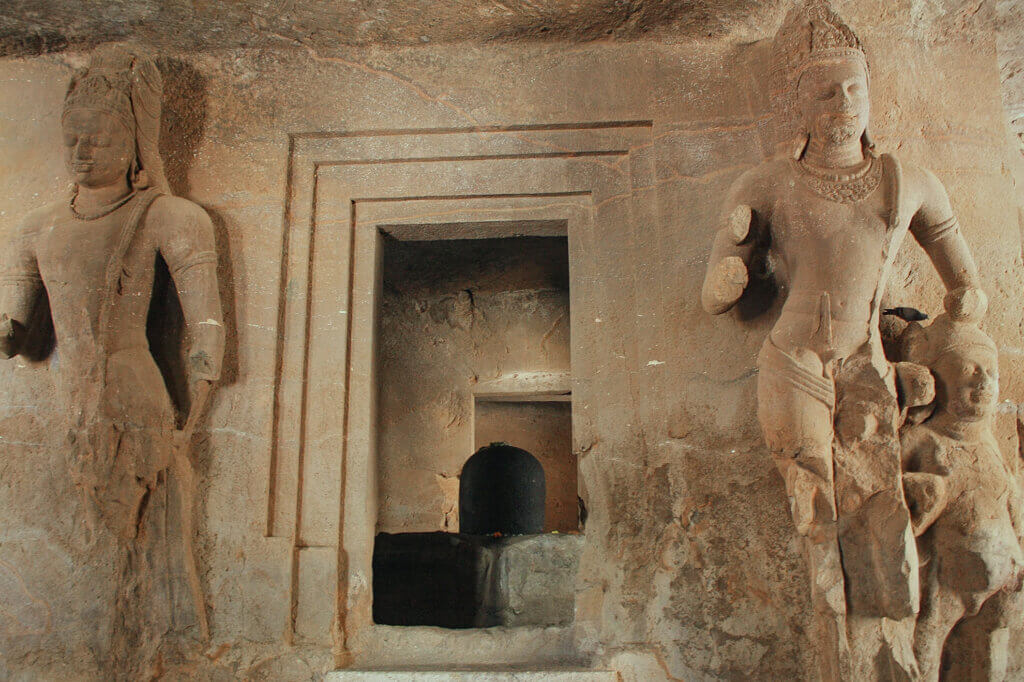
The Elephanta caves get their name from the life-sized Elephant that stood here. It was carved from a single stone. Then the Britishers arrived in India. They had a stupid idea to cut this elephant and take it away to their country. In the end, they couldn’t do it. But this elephant was now broken into several pieces. The reassembled Elephant statue now stands in the Jijamata Udyan in Mumbai.
As I entered the Elephanta caves, I was immediately amazed by these carved stones. The huge scale of these sculptures is mesmerizing. Many of these have been mutilated and defaced in wars and fights, which is a shame. But they still look enchanting. The caves had me visualizing how they must be alive with activity in the olden times.
The Elephanta caves have been built in such a way that the main cave and the surrounding caves form a mandala or a pattern. The perfection of this pattern is really admirable. The main cave had huge pillars carved out of stone, The floors are mostly flat, and the designs are quite symmetrical. A half-finished cave nearby will give you an idea of how the work in progress looked like!
When and who built these caves?
Some historians and scholars believe that these caves were built in the 5th and 6th century. Another hypothesis links these caves to the Ellora caves in Aurangabad which are from the 7th century. Some caves have Buddhist Stupas as well as depict the Hindu god Shiva. This shows that these caves were first occupied by Buddhists and later by Hindu Brahmins.
Regardless of which century they were built in, these caves are a wonder. Firstly, the question arises, that how did these people arrive and depart from this little island located deep within the Arabian sea? Did they use boats back then?
And the second question that comes to mind is – How did they do it? If you see these cave sculptures, you will find that they are all life-sized and really huge. How did men of that era carve something of such huge scale and magnitude? Moreover, how is it so symmetric and designed to look like a mandala pattern from the top? It is all still a mystery.
The Story of Elephanta caves
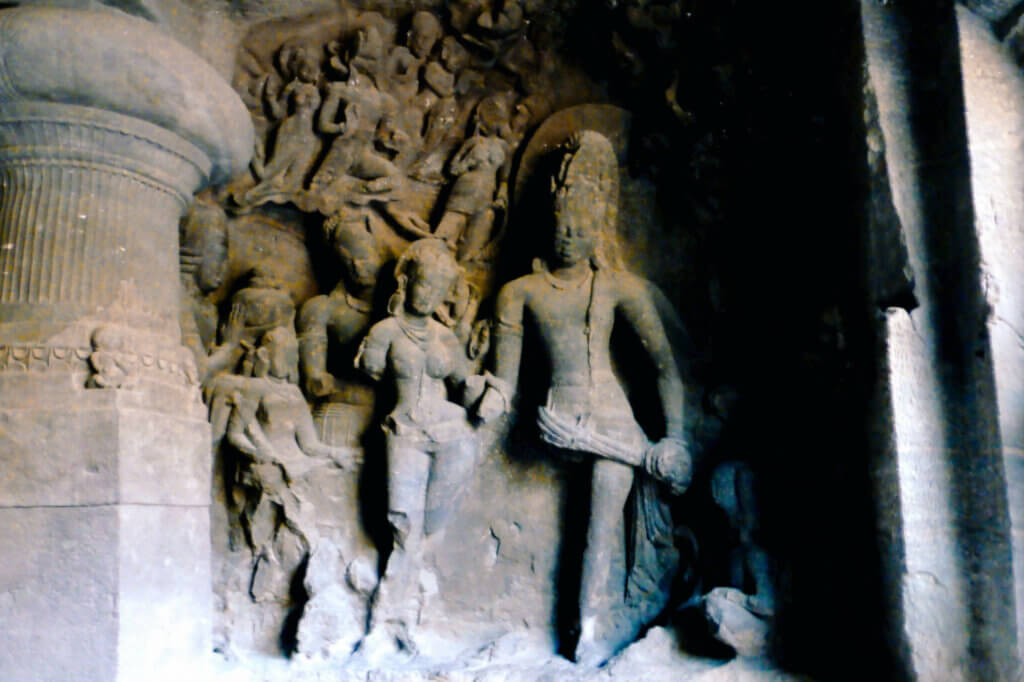
The most common diety depicted in the Elephanta caves is the Hindu God Shiva. So, it is important to understand him a bit to understand these caves. Shiva is the God in Hindu mythology who has a lot of talents. He is also very innocent and sometimes gets angry to the point of destruction. Shiva is the Lord of dance and the Yogi of all the yogis. He marries Parvati who wins him after a lot of tapas ie. some rigorous spiritual and yogic exercises.
Shiva takes various forms called Roopa’s in Hindu mythology. The ‘Shiva Linga’ in Hindu temples also represents Shiva. These caves encompass Lord Shiva in all his forms or states.
The Lost History of Elephanta caves
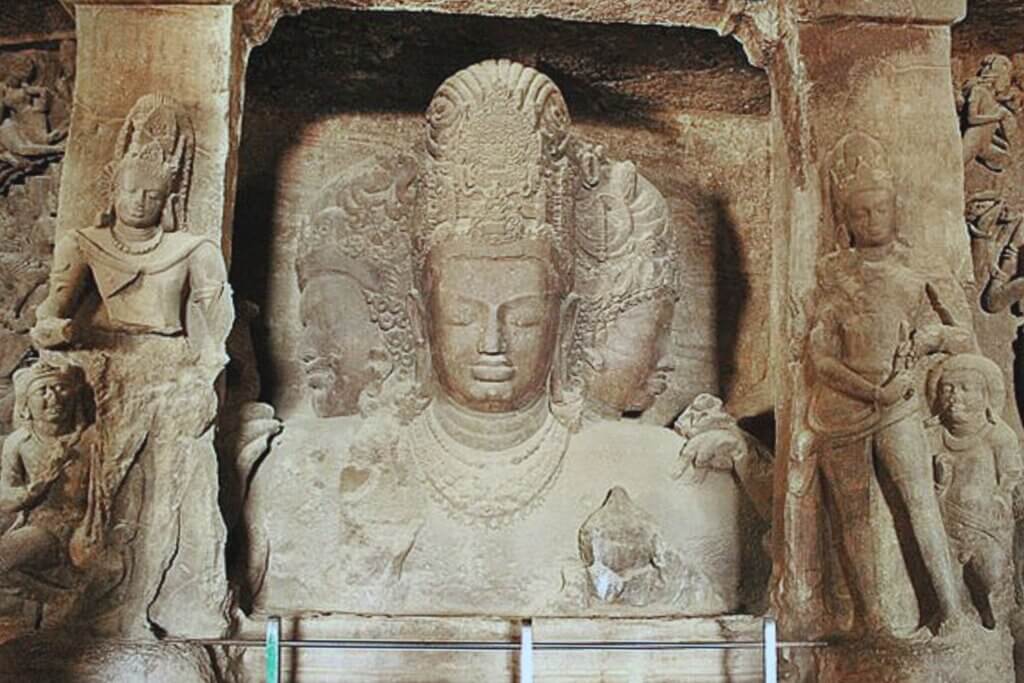
The huge sculptures inside the Elephanta islands depict several stories from Hindu mythology. The following forms or Roopas of God Shiva can be found inside these caves of the Gharapuri islands.
- Trimurti: The Trimurti depicts the three faces of Lord Shiva, which represent three aspects – creation, protection and destruction.
- Gangadhara: This sculpture depicts the story of how Shiva brought the mighty river Ganga to earth. Gangadhara is on the left of Trimurti.
- Ardhanarishvara: This is a sculpture that depicts the interdependence of feminine and masculine aspects in life. Here, the Shiva idol is feminine on the right side (Parvati) and masculine on the left (Shiva).
- Shiva slaying Andhaka: Shiva slaying Andhaka depicts God’s angry side. The expression on the face here is really ferocious.
- Marriage of Shiva: This beautiful sculpture celebrates the marriage of God Shiva with Parvati. According to the mythological tales, Parvati stabilizes Shiva by cooling him down when he is angry.
- Yogishvara: Shiva is the Lord of Yoga. He performs the most rigorous spiritual exercises and yoga. They are so rigorous that we humans cannot even attempt to perform these tapas or exercises.
- Nataraja: Shiva is also the Lord of Dance. In Hindu mythology, he dances when he is angry. This dance is called Tandava Nrutya – a dance that will destroy the universe.
- Mount Kailash and Ravana: This sculpture depicts the legend when the demon King Ravana wanted to lift Mount Kailash -the residence of Shiva and Parvati, up from the ground.
- The Linga Shrine: Inside the main cave in the centre is this room. And inside the shrine is the Shiva Linga.


